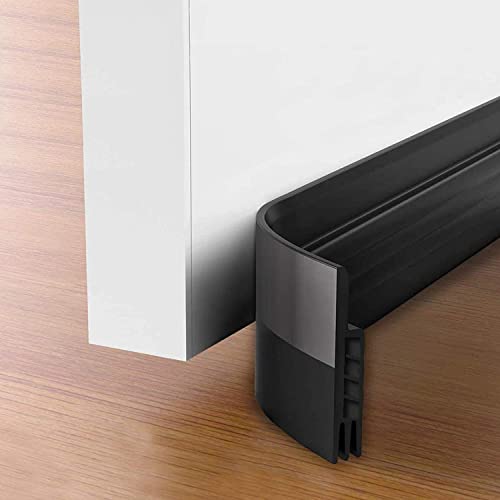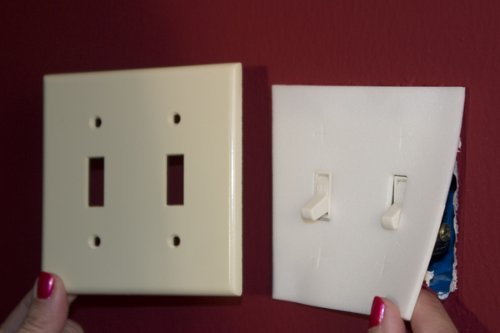
As you might know, smoking isn’t good for your health. You’re also probably aware of the fact that exposure to the smoke that comes off of cigarettes, whether or not you’re a smoker, can be just as dangerous for your health, leading to serious problems such as heart disease and stroke, lung cancer, and worsening of asthma symptoms. Unfortunately, secondhand smoke exposure is a common issue in multi-unit dwellings such as apartments. So how do you get rid of it?
How do you get rid of secondhand smoke in an apartment? To get rid of secondhand smoke coming from your apartment, start by sealing it off. There are several ways you can do this: block all the gaps under your door using a draft guard or door sweep, apply weather stripping to your windows to stop smoke from coming in from the outdoors, block vents using insulation padding, and apply caulk to cracks and crevices in the wall. To get rid of the smoke that may linger in your apartment, try opening all your windows and using a fan to blow it out. Another solution you can try is to change your air filter. If the secondhand smoke is coming from a detectable source, like a neighbor, consider approaching them to try and get them to understand your issue. If they’re open to it, work with them to try and find a compromise. You can also try contacting your landlord or property manager to solve the issue.
Secondhand smoke can pose a range of issues to you and your family, so you’re likely concerned if it’s coming into your apartment. Read on to discover how you can handle such an issue.
Table of Contents
1. Seal your apartment
To get started, consider sealing the points through which smoke can find its way into your rental unit. The following are some of the most effective sealing techniques:
A. Apply caulk to cracks, gaps, or joints in the wall
There may be cracks around vents, lighting fixtures, electrical sockets, cable cords, and windows. Use caulk to completely seal these openings so smoke cannot find its way into your unit through them. Here are some tips for applying caulk:
- To ensure good adhesion, clean the area you plan to caulk. Use a putty knife, stiff brush, large screwdriver, or special solvent to remove paint and any old caulk. Make sure that the area is dry so don’t seal in moisture.
- Hold the caulk gun at a forty-five-degree angle so its flush with the crack
- Apply caulk in one straight continuous stream.
- Make sure the caulk sticks to both sides of a seam or crack
- If the caulk ends up oozing out of the crack, use a putty knife to push it back in.
- If the caulk ends up shrinking, reapply it to form a smooth bead that seals the crack completely.
B. Apply weather stripping to your windows
If one of your neighbors likes to smoke on their patio or balcony, smoke may enter your unit through your windows. If this is the case, you may want to keep your windows closed and install weather stripping to block the smoke from coming into your apartment. Make sure that the type of weather stripping you choose for your window accommodates the sliding of panes – up and down, out, or sideways. It should also seal well when the door is closed but allow it to open freely. Here are additional guidelines to applying weather stripping:
- It should be applied to clean, dry surfaces in temperatures above 20 degrees Fahrenheit.
- Measure the area that needs weather stripping at least twice before making a cut.
- Apply the weather stripping snugly against the surface.
C. Block the gaps beneath your door with a door sweep or draft guard
Secondhand smoke can drift into your apartment under your exterior door. You may be able to block it in two ways:
- Installing a door sweep at the bottom of your door. These are narrow barriers that are designed to keep smoke and cold air from getting your home underneath exterior doors. Choose under-door sweeps for the tightest seal possible between the bottom of your door and the surrounding floor.
- Laying a draft guard across the threshold to seal the gap under your door. You can find draft guards at your local home goods store or online. You can also try making one yourself by rolling up a towel.
D. Use plugs or outlet seals to cover your electrical sockets
Smoke can also enter your living space through electrical sockets because the units are all connected. To limit this, you can cover your sockets using plugs or outlet seals. Push them into your sockets and make sure the back of the sealing plug is flush against the socket. You can find seals specifically made for electrical outlets as well as light switch points at your local hardware stores.
E. Use insulation padding and painter’s tape to seal large gaps and vents
Another point through which smoke can drift into your unit is through air vents or gaps around your air conditioner or heating system. You can try blocking the smoke by covering these points with insulation padding and/or painter’s tape. To secure the padding, tuck it into the gaps or lay it over a vent. You can follow this up with painter’s tape to make sure the padding stays in place.
2. Getting rid of the smoke
Here are some tips on how to remove secondhand smoke from your home:
A. Use fans
Use portable fans to blow the smoke out of your living space through windows. The most effective way of doing this is by creating a cross-ventilation system – to do this, place a box fan in an open window and angle it into the room. Place a second box fan in another open window across the room and angle it so that it’s facing outside of the room. The second fan blows the secondhand smoke from your unit, while the first one blows fresh air in.
B. Change your air filters
If fans don’t work for you, consider changing your air filter. Most air filters need to be replaced every three to six months, but you may want to swap yours out even more often. Also, you may want to go for a High-Efficiency Particulate Air (HEPA) filter or any other high-efficiency filter.
C. Using activated charcoal
Baking soda does a superb job at absorbing smoke odors, and can efficiently lift the smoke smell out of your carpet if you use plenty of it, but if you want something a bit more effective, consider investing in some powdered activated charcoal. You can usually find it at health food stores, pet stores, or large department stores.
3. Talk to your neighbor
If you’re sure that the secondhand smoke is coming from one of your neighbors in your multi-unit dwelling, here some tips on how to handle the situation:
A. Approach your neighbor if you know where the smoke is coming from
Talking to your neighbor is often the most effective way to fix the problem. Your neighbor may not even be aware that their smoke is finding its way into your unit. Make sure you approach them in a calm and non-confrontational manner.
B. Make them aware of your experience
Explain to your neighbor exactly what you’re going through, such as smelling smoke, seeing visible smoke drifting into your unit, or having health issues. Let them know that you and other occupants are uncomfortable or having trouble breathing because of the smoke.
C. Work together to find a solution
Make your neighbor aware of the fact that you aren’t trying to police or control their behavior. Politely ask them if they’re willing to make a change so that secondhand smoke won’t come into your apartment. Some suggestions you can make include:
- They can avoid smoking in common areas like hallways
- They could smoke outdoors instead of inside their units.
- They can seal off their windows, doors, and vents to keep the smoke from escaping
4. Talking to your landlord
Alternatively, you can take up the issue with your landlord or property manager.
A. Go over your lease
Many landlords ban smoking in their buildings to protect the health of their tenants as well as to maintain the value of their property. Go over your lease to find if there’s any stipulation that prohibits smoking in your building. If there’s one, contact your landlord or property manager to inform them about your neighbor violating the no-smoking policy.
B. Review local laws or ordinances
Your local government may have laws or ordinances in place that require landlords or property managers to either notify you before you sign the lease or protect you from potential secondhand smoke.
Final thoughts
Secondhand smoke can easily find its way into your rental unit in a multi-unit dwelling from many places, including cracks in walls or floors and vents. It might help to seal any gaps you may have under your door, on your windows, and in your walls. To get rid of the stale smoke smell in your apartment, you can try solutions such as cracking open a window, using activated charcoal, and changing your air filter. Finally, go to the source of your problem and let them know that their cigarette smoke comes into your unit. If this doesn’t work, talk to your landlord or property manager so that they can deal with the issue.
Last update on 2023-04-16 / Affiliate links / Images from Amazon Product Advertising API
























